Elhuyar Dictionary
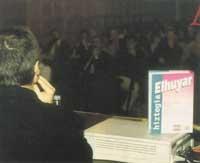
The work that we present through these pages is much more than a colorful cover, the dictionary Elhuyar español-euskara//castellano-vasco. Although it is a skin work, content, background, oriented to meet your needs, it is the sweat of many friends. The dictionary presented by Elhuyar Kultur Elkartea has been developed by a group of 13 people. 85.000 entries, 120.000 acceptions, 16.000 sub-entries, 120.000 examples, a debate of eleven hours, more of a disagreement... and an obvious vacuum: the vacuum left by the person who from the beginning had all the faith in the work and the team since it was a mere project, the vacuum left by the proud gift of Cadiz... “ had to do, Joseba... and... we have done it! •
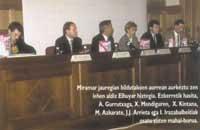
The Elhuyar Dictionary has had since its inception a work of collection and dissemination. He has drunk in sources of Basque tradition, maintaining what was said by the ancients, with the aim of advancing towards the future. The Elhuyar Dictionary also wanted to be a bridge between the two languages, Basque and Spanish, a bridge of the future: a bridge with beams of new materials that has tried to foresee the needs of the Basques of today and tomorrow. The reader has a conversation between two languages, two communities of speakers, Elhuyar Hiztegia. Below is a snippet that starts the dictionary.

The bilingual vocabulary is an appointment in which two languages interrelate and, just as their old friends begin to tell stories and ‘on this occasion, what new news?’ words begin to be told. Each one ventures and exposes to the other his own words, phrases, grammatical themes and even examples, in the most appropriate way to understand them in his language.
As mentioned above, the Elhuyar dictionary has already made its public appearance. In the Auditorium of the Miramar Palace of San Sebastian. To relieve the last minute nerves, the room was full of people and before all of them stripped off the work of recent years.
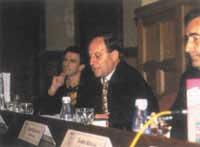
The event began with the audiovisual montage made by the computer team of Elhuyar. It talked about the importance of the Basque tradition and the place that the Elhuyar Dictionary wanted to occupy. To sum up in a few words what was heard and seen, we can say that each epoch has had its own vocabulary and that the Elhuyar Dictionary aims to be a new century dictionary. M. Larramendi, R.M. Azkue, P. Lhande, P. The montage offered a retrospective view of the dictionaries Mujika, and Hiztegia 2000, as a sample of the work done during all these years, with the aim of explaining the evolution of dictionaries and lexicography in general. Mixed with words, music and images, we wanted to offer a small and simple tribute to what has been done to date.
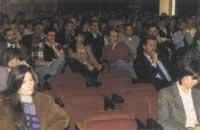
Elhuyar Hiztegia is born in debt to the Basque tradition, has grown and has become reality in the shadow of the Basque tradition, and at the same time has had at all times the new needs of the future that every day arise to us all. To consolidate unified and standard Basque in recent years, to better understand our tradition, to prepare a modern and rich cultural language, to create new products and materials in the media, translation and Basque, there is no denying that an extraordinary effort has been made in all of them. Isn't it worth gathering the results of these experiences in one job? So it seemed to us and in that effort came the vocabulary that we wanted to present also before you.
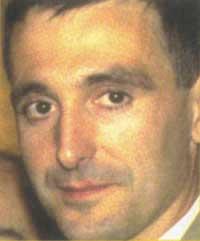
“Today seems to me like a coin. On the one hand, I am full of joy and pride because we will publicly present the great fruit of the two-year work. On the other hand, sadness overwhelms my heart today, among us, because there is not Joseba Jaka, who from the beginning had faith in the viability of this dictionary. Therefore, I would like that this act, in addition to publicly publicizing the dictionary, was also a reminder and recognition of the work done by Joseba in favor of Basque culture
I would like to sincerely thank Mr. Juan José Arrieta for the collaboration of Caja Laboral for the realization of this dictionary. I also want to congratulate the team behind this colorful skin. I believe that the working spirit you have put in need has been tireless.”
The Basque lexicography has had its own stages and has wanted to respond to the deficiencies, needs or challenges that speakers felt in their environment. Therefore, the orderly search or enumeration of the Basque words has sometimes been done in a complex way to show the Castilian speakers the rich treasure of our lexicon and the wonderful uniqueness of the Basque language, although the hot ingenuity that has been used has often surprised the locals. But since the use of Basque has been normalizing and officializing, the needs of the elaboration of the dictionary have been equated with those of the surrounding peoples. (…)
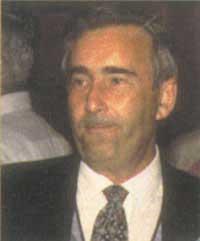
Basque dictionaries have adapted to the real needs of today's Basques, to express the concepts that today's society knows, uses and needs. In this sense, without forgetting the vocabulary of the traditional ways of life of the hamlets and fishermen of our recent past, the dictionary, like the Basques of today, has been published. (...) Those of us who were preparing the Modern Basque Dictionary, which would later become Dos Mil Dictionary. (…)
Since then, numerous dictionaries specialized in various sciences have appeared, as well as beautiful textbooks, essays and research. Writers have also seen the offer of the lexicators and have accepted some words and rejected others, instead of them other forms, surely more appropriate, and criticism and preferences cannot be forgotten. The theoretical dictionary has had to go through the touchstone of the users. This is, among other things, the hole that this dictionary aims to fill, so that, once gathered the numerous testimonies of the changes of recent years, once selected, updated and ordered, it will be offered to all types of Basques.
I have to confess that it has been enriching for me to make the journey of the dictionary. In order to be the director of such a dictionary, you must respond to the entries in front of you. You cannot say that this word has problems and better leave it for the next one. You have to pay what is acceptable, or accept and move forward in the problems we have yet. In other words, with the theoretical criteria we have for the standardization of the lexicon, this type of work offers the opportunity to see what the blacksmith can do in the stove. (…)
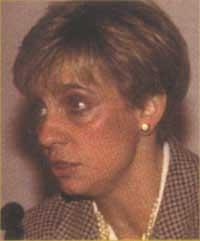
This work has also allowed me to put my nose into terminology. (...) Without leaving aside the thread of standardization, dictionaries and encyclopedias are a good time to discuss and decide if we have to choose the way of the butcher or meat. Logically, the decision can also be the introduction of both forms. The dictionary that concerns us is the new bilingual box of the union, which generously collects the lexical heritage of dialects. And, above all, in exchange for entries in Spanish, and at the same level, has paid for the different dialects. And this, I believe, can only promote unity, because today's standard Basque is not only a place for the words of one and the other dialect, but more than once demonstrates the need for these different words. (…)
I know that some of the forms that appear in this dictionary will undergo changes in the coming months and years. It is not to surprise or worry. Correction and complementation starts from the very day of publication for all dictionaries, not only for this one. But the future, the great work we have in our hands, is undoubtedly a future of happiness.
“Even though translators have always been one of the best dictionaries clients, they may almost never have been taken very handy when breaking these dictionaries. And when I say translators, I mean not only those of the trade, but all those who, in some way, have to translate or translate something, but most of us.
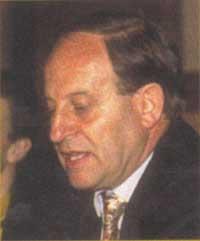
Therefore, when I was asked to participate in this dictionary and they informed me that I wanted to take into account the world of translation, I gave my consent without thinking twice. (...) I believe that, once and for all, we are facing a dictionary that, with content and size, will fully respond to most translators and teachers today. (...) If I am asked why it responds to the need of many translators, the first thing I have to say is that a dictionary never fully responds to the work of a translator, but to the extent that it is possible to establish a bridge between abstract language and the unrepeatable expression of texts, this dictionary largely achieves that approach between two languages and culture. (…)
Therefore, with 85,000 entries and 120,000 acceptances, the only dictionary is the one that, by the way, has opened between Spanish and Basque a highway wider than any other. (...) To you and me, to whom we will use in daily work, it is now up to us to judge and propose improvements so that it is more and more precise, to win that bet of the Basque that we all have in common.
Elhuyar Dictionary
Its structure and contents have not changed since 1981. We know perfectly the work done since then to better understand the tradition of Basque and turn it into a modern and powerful language. The main and most important result of these research and progress was undeniable that it was worth meeting in a book.
Therefore, when we started the work we realized that we had to be collectors, without inventing what was invented, of the fruits that the Basque industry has given, and in a useful and understandable way, organize ourselves properly in a dictionary. That was our starting position. The information you will find in the dictionary is a newly built bridge between Basque and Spanish, but the vast majority of the bricks, steel beams, concrete pillars and cladding materials that we have used to build it are not invented by us, but made by institutions, groups and Euskaltzales. We have only collected and unified what they have proposed and disseminated. That is why we believe that this work is a well-focused photo of the current Basque language.

In any case, before we have said ‘the vast majority’, and not all’, because we have had to become proponents sometimes, when compensating for certain words in Spanish, because the Basque language has not had tradition or because no one has made new or successful proposals, if we try to fill the existing vacuum. That is why we believe that the dictionary is a real effort to sharpen the tools of the current Basque language and prepare it more for the future.
The dictionary has about 85,000 entries between both parties and 120,000 acceptances. These same figures indicate the scope of the dictionary. In fact, as for the number of entries, it is evident that we do not refer to a basic work, conceived with the intention of covering only the most important needs, but that a significant lexical mass of both languages has been gathered to take into account the various needs, not only of the standard user. In this way, we have worked on the common and general vocabulary, both the historical and the current 'urbanized' lexicon, along with the technical terminology, which has gathered a total of sixty-seven areas of knowledge.
The brand of knowledge acceptances are approximately 18,000 in each of the sections. On the other hand, if we look at the total number of meanings, it is evident that an effort has been made to differentiate the meanings of the words and to accurately reflect the counterperformances that correspond to them depending on it. Apart from the lexicon, the dictionary will also inform you of the onomastics. In each chapter there are about 2,800 entries of Euskal Herria and of places of the world, baptisms or ponies, historical characters, etc.
Within the article of an entry you will find the so-called ‘sub-entries’. They can be of two types: on the one hand, word associations, name structures + adjectives, etc., that is, ‘complex lexias’; on the other, expressions, locutions, grammatical structure, etc. Both types are structured into differentiated sections.
Finally, the article always defines the category (or categories) of the word and, where appropriate, the mark of use, linguistic registration, the mark of the area of knowledge, etc. In the section Euskera-Castellano the dialect or geographical area (Ipar. or D.G.) It is also reported. When it has been considered necessary notes have been added in brackets and numerous examples illustrating the use of the word.
When it comes to compensating, we have tried to offer as many synonyms as possible, regardless of the physical limitation of the book. This is directly related to the treatment of dialects. Euskalkis have long needed a site in the standard Basque language. Therefore, we have included in the list of words in Spanish dialectal words, without dialect marks. In the Basque section, the dialect to which these words belong is indicated through the corresponding mark.
One of the main tasks of the bilingual vocabulary is the reader's construction of direct relationships between the elements of both languages, i.e. (considering that a word and a consideration may have more than one meaning), when we assign that type of consideration to a word to know what meaning or meaning it is associating with. Otherwise, the reader can form erroneous relationships. One of our biggest concerns in this work has been the adoption of measures to prevent it.
An important resource for this is to differentiate well and clearly the meanings in the article of the word, either by notes or for example, as it appears in the article of hearts. In return we have tried to give the most detailed information possible. For example, knowing = jakin equality can be given for good in general, but it is true that when the phrase is impersonal ( you know …) it is known in Basque and if it is not so nobody knows that they are used. This is what our reader will know, as we have organized the SABER article based on it.
On other occasions it is impossible to give concrete compensation, since in certain contexts it would be returned differently, so it is necessary to make a general formulation of this type. In these cases, the forms that appear in the sample translation are not exactly the same as those we have put on the payment list. Abuse, what and situation are clear examples of this. Therefore, we wanted to act freely in the expulsion of examples, offering translations that cannot be channeled as clearly as we want by a simple list of payments and that are more friendly and natural. The objective is, in any case, to provide the reader with the information in the most useful way possible so that he can fulfill the function we have assigned to the bilingual dictionary above.
In short, it is none other than the main objective of all this work: that all the communication highways mentioned above are accessible and comfortable.
Article structure
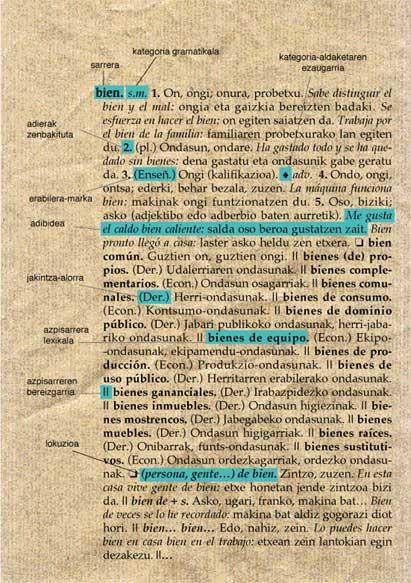
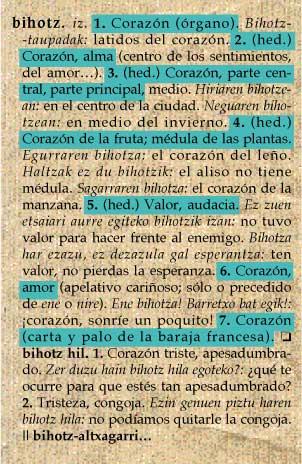
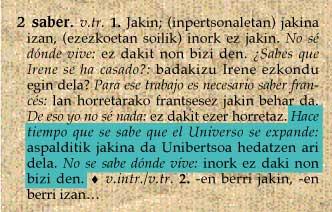
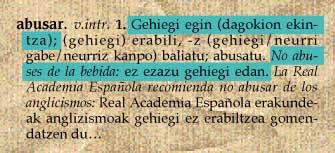
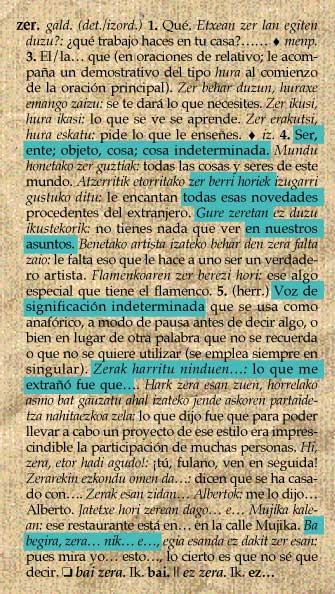
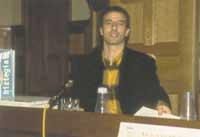
Buletina
Bidali zure helbide elektronikoa eta jaso asteroko buletina zure sarrera-ontzian











